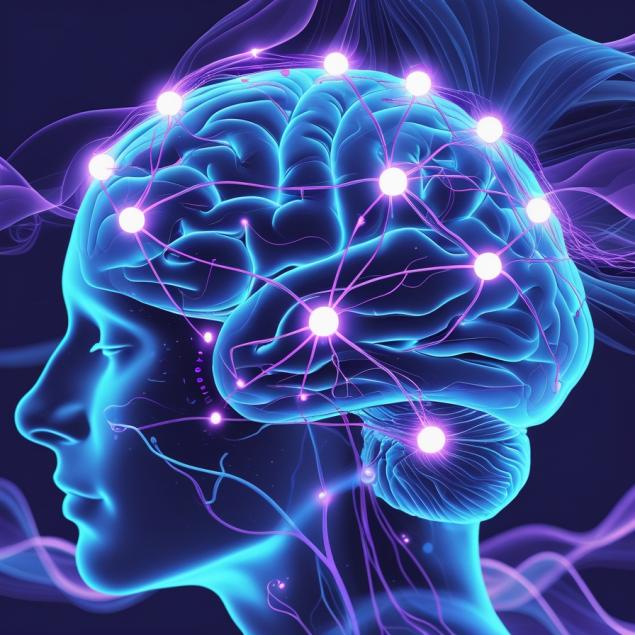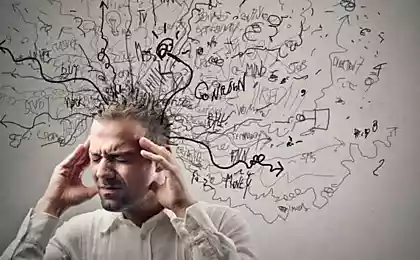13
The 5-4-3-2-1 method: Revolutionary Techniques Against Anxiety
The revolutionary technique of instantaneous release of anxiety

Imagine a situation: you are sitting in front of an important presentation, and suddenly the heart starts beating like crazy, palms sweat, and a carousel of catastrophic scenarios turns in your head. Familiar? Anxiety is the uninvited guest who can show up at the most inopportune moment and turn an ordinary situation into a real nightmare.
But what if I told you that there is a simple technique that can bring you back to calm and control in a few minutes? Meet the 5-4-3-2-1 method, a tool that has already helped millions of people around the world cope with anxiety attacks.
It's important to know: Anxiety disorders affect about 264 million people worldwide, according to the World Health Organization. This makes anxiety one of the most common mental states of our time.
What is 5-4-3-2-1 and why does it work?
The 5-4-3-2-1 method is a grounding technique based on mindfulness principles. Its essence is the consistent use of all five senses to regain attention in the present moment. When we are anxious, our brains literally “run away” from reality, creating endless “what if” scenarios. This technique acts as a powerful anchor that brings us back to the here and now.
Scientific justification
Studies show that mindfulness techniques activate the parasympathetic nervous system, the part of our body that is responsible for relaxation and recovery. At the same time, the activity of the amygdala, the fear center in the brain, decreases, and the activity of the prefrontal cortex, responsible for rational thinking, increases.
Step-by-step guide to the application of the method

5
Five things you see
Look around and consciously name the five things you see. Not just take a quick look, but really look at them: notice the color of your phone, the texture of the wall, the play of light and shadow on the table, the shape of the cloud outside the window. Details are important – the more you “study” the world around you with your eyes, the faster your brain will switch from anxious thoughts to reality.
4.
Four sounds around you
Close your eyes or focus on the auditory sensations. Identify four different sounds: it can be the hum of the air conditioner, the distant noise of cars, the chirping of birds, the knocking of heels along the corridor or even the sound of your own breathing. Don’t try to change or value anything, just listen and accept.
3
Three physical sensations
Turn your attention to your body. Feel three different tactile sensations: the pressure of the feet on the floor, the touch of clothing on the skin, the air temperature on the face, the texture of the surface under the fingers. This step is especially important because it helps to “ground” and feel your presence in space.
2.
Two scents.
Focus on the smells around you. It can be the aroma of coffee, the freshness after rain, the smell of your skin, or even the lack of smell per se. If there are no bright scents nearby, bring an object to your nose - a coin, a sheet of paper, a sleeve of clothes. Olfactory receptors are directly related to the limbic system of the brain, so smells instantly affect the emotional state.
1st
One taste note
Finish the exercise with a focus on taste. Drink a sip of water, eat a mint candy, or just notice the taste in your mouth. If nothing is on hand, focus on the taste of saliva or aftertaste from your last meal. Taste is a powerful anchor of the present moment.
Anxiety lives in the future. When we return our attention to the present moment, anxiety simply cannot exist—it has no room to live in the here and now.
Why is this technique so effective?
The secret to the effectiveness of the 5-4-3-2-1 method lies in the neuroplasticity of the brain - the ability of the nervous system to change its connections in response to experience. When we consciously shift our attention from anxious thoughts to sensory sensations, several important processes occur:
Prefrontal cortex activation. This area of the brain is responsible for executive function, planning and self-control. When we consciously focus on sensations, the prefrontal cortex takes control of emotional responses.
Decreased amygdala activity. The amygdala is a kind of brain signaling that triggers the fight-or-flight response. Mindfulness techniques help calm this ancient survival mechanism.
Vagus nerve activation. This major nerve of the parasympathetic system is responsible for relaxation. Deep, conscious breathing and concentration on sensations stimulate his work.

Real success story
Maria, a 32-year-old marketer from Kiev, said: I started having panic attacks after the birth of my second child. I felt like I was losing control of my life. The psychologist taught me the 5-4-3-2-1 method, and after a week of practice I felt the difference. Now, as soon as I feel anxious, I immediately begin the exercise. It works almost instantaneously, like changing a channel in your head.
Practical tips for maximum efficiency
Apply at an early stage
Don’t wait until the alarm peaks. Use the technique at the first signs of anxiety - so you can prevent the development of a full-fledged attack.
Repeat if necessary.
If one “cycle” doesn’t help, don’t get upset. Repeat the exercise 2-3 times in a row. Sometimes the brain takes time to switch.
Practice in calm moments
Exercise technique not only during anxiety. Regular practice in a calm state will help automate the skill.
Save the instructions.
Write down a step-by-step guide in phone notes or on a card. During anxiety, memory can fail.
️
Take your time.
Pause between steps and breathe deeply. Haste can increase anxiety rather than reduce it.
Use it everywhere.
The technique works anywhere: in the office, transport, at home, on the street. You don’t need special facilities or equipment.
When the method may not work
The 5-4-3-2-1 method is a first aid tool, not a panacea. In some cases, professional assistance may be required:
• With frequent panic attacks (more than 2-3 times a week)
• If anxiety significantly affects quality of life
• In the presence of physical symptoms (chest pain, difficulty breathing)
• If the technique does not bring relief after a few weeks of practice
In such cases, be sure to contact a psychologist or psychotherapist. Asking for help is a sign of strength, not weakness.
Scientific studies of effectiveness
Evidence base
A study published in the Journal of Clinical Psychology in 2019 found that grounding techniques, including the 5-4-3-2-1 method, reduced anxiety levels by 23-31% after the first application. Long-term studies show that regular mindfulness practice can reduce the risk of developing anxiety disorders by 58%.
Your journey to peace begins today.
The 5-4-3-2-1 method is not magic, but a science-based technique that gives you real-world tools for managing anxiety. Like any skill, it requires practice, but the results are worth the effort.
Remember, anxiety is not your enemy. This is a signal from an organism that once helped our ancestors survive. But in the modern world, this ancient mechanism often works without a real threat. The 5-4-3-2-1 method will help you learn to distinguish between real danger and false alarm.
Start practicing today. Your future self will thank you.
Glossary
Mindfulness (Mindfulness)
A psychological state characterized by focusing on the present moment while accepting one’s thoughts, feelings, and bodily sensations without judgment.
Grounding
Techniques to help a person focus on the present moment and their physical sensations to reduce anxiety and stress.
Amygdala
The amygdala in the brain is responsible for processing emotions, especially fear and anxiety. It plays a key role in the fight-or-flight response.
Prefrontal cortex
The area of the brain responsible for executive function, planning, decision-making and emotional regulation.
Parasympathetic nervous system
Part of the autonomic nervous system, responsible for the state of rest, recovery and relaxation of the body.
vagus nerve
The longest cranial nerve that connects the brain to major organs. It plays an important role in activating the parasympathetic nervous system.
Neuroplasticity
The ability of the nervous system to change its connections and reorganize in response to experience, learning, or injury.























